|
Supermarine Spitfire Mk.I / II
Black Box Edition
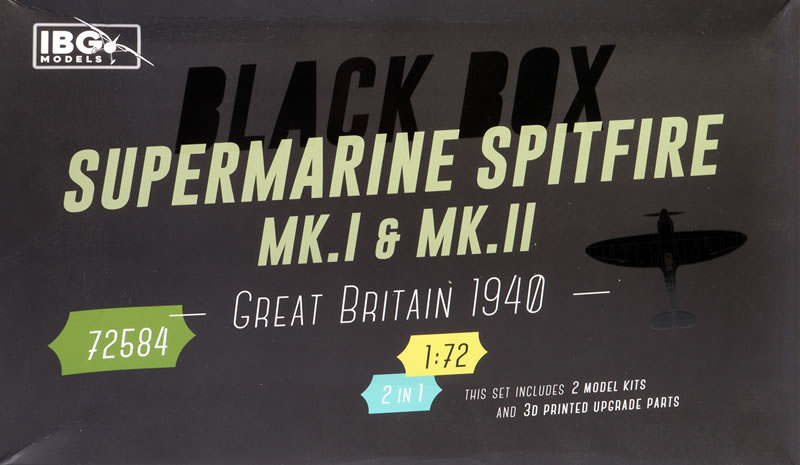
IBG, 1/72 scale
S
u m m a r y |
| Catalogue Number: |
IBG Kit No. 72584 - Supermarine Spitfire Mk.I / II Black Box Edition |
| Scale: |
1/72 |
| Contents and Media: |
348 parts in grey coloured plastic; 46 parts in clear; two brass photo-etched frets; self-adhesive die-cut masking sheets; 3d printed resin parts (three cockpits, two pairs of main wheels, two pairs of exhaust stacks; seamless intake; mirrors (interior and exterior); two sets of self-adhesive die-cut masks; markings for ten aircraft.. |
| Price: |
55,13 € Euro plus shipping available online from IBG's website
GBP£49.49 EU Price (GBP£41.24 Export Price) plus shipping available online from Hannants |
| Review Type: |
FirstLook |
| Advantages: |
Parts supplied for two full models; high level of detail; busy surface
features including crisply recessed panels and subtle raised and recessed rivet lines where
appropriate; includes 3d resin and brass photo-etched parts; interior details including radio, structural and fuselage fuel tanks; separate parts for different styles of closed and open canopies; many options Spitfire Mk.I and IIs. |
| Disadvantages: |
None noted. |
| Conclusion: |
IBG releases another impressively detailed rendition of a classic fighter in 1/72 scale. |
Reviewed by Brett Green

The Supermarine Spitfire Mk.I was the first production variant of what would become one of the most famous fighters of the Second World War. Entering RAF service in the summer of 1938, the Mk.I embodied R.J. Mitchell’s sleek design, powered by the Rolls-Royce Merlin II and later the Merlin III engine. Its eight .303 Browning machine guns gave the aircraft an impressive weight of fire for the late 1930s, while the thin elliptical wing delivered excellent speed and manoeuvrability. By the time of the Battle of Britain in 1940, the Spitfire Mk.I was in widespread frontline service, forming a vital partnership with the Hawker Hurricane in repelling the Luftwaffe.

The Spitfire Mk.II followed in 1940, fitted with the more powerful Merlin XII engine and featuring a constant-speed Rotol or de Havilland propeller, which improved climb and combat performance. Production was rapidly ramped up, and the Mk.II entered service just as the Mk.I was being phased out. In many respects, the Mk.II bridged the gap between the early Spitfires and the progressively more capable Merlin-powered variants that followed, ensuring the type’s continued edge in aerial combat.
Early Spitfires in 1/72 scale
The Spitfire Mk.I and Mk.II have been represented by a long line of kits in 1/72 scale. Airfix’s 2010 tooling of the Mk.I is the current benchmark, with accurate outline, subtle recessed detail and options for early or late features. It is joined by Airfix’s equally refined Mk.II, which provides the correct spinner and propeller choices for this variant.

Other worthy earlier 1/72 scale kits include Tamiya’s Mk.I, first released in the 1990s. This is a simple, easy build with good fit, though the outline is less precise compared to more recent offerings.
Hasegawa’s 1/72 scale Spitfire Mk.I/II family from the same era offers fine recessed panel lines but a slightly undersized fuselage.
IBG has launched an all-new family of Spitfires in 1/72 scale.
They have started with a dual-kit release containing parts for two Spitfires - Mk.I and Mk.II or combinations of each.
IBG's 1/72 scale Black Box Supermarine Spitfire Mk.I and Mk.II comprises 348 parts in grey coloured plastic, 46 parts in clear, two brass photo-etched frets; self-adhesive die-cut masking sheets; 3d printed resin parts (two cockpits, two pairs of main wheels, two pairs of exhaust stacks; mirrors (interior and exterior), two carburetor air intakes) and markings for ten aircraft.
Although the parts count may look daunting, remember that these are parts for two complete kits, When you consider that there are also a large number of optional parts that will remain on the sprues, the total parts per kit is really quite manageable.
3d Printed Parts
IBG has supplied a generous amount of high quality 3d printed resin parts.
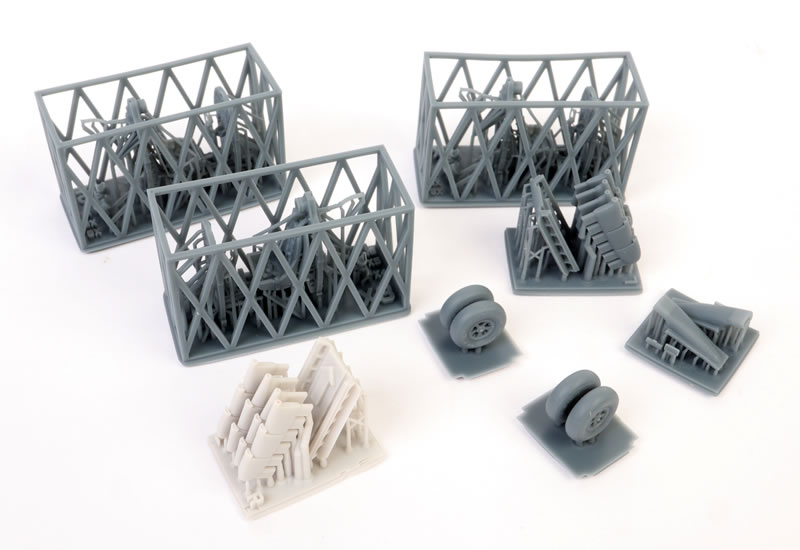
The most impressive of these are the cockpits.
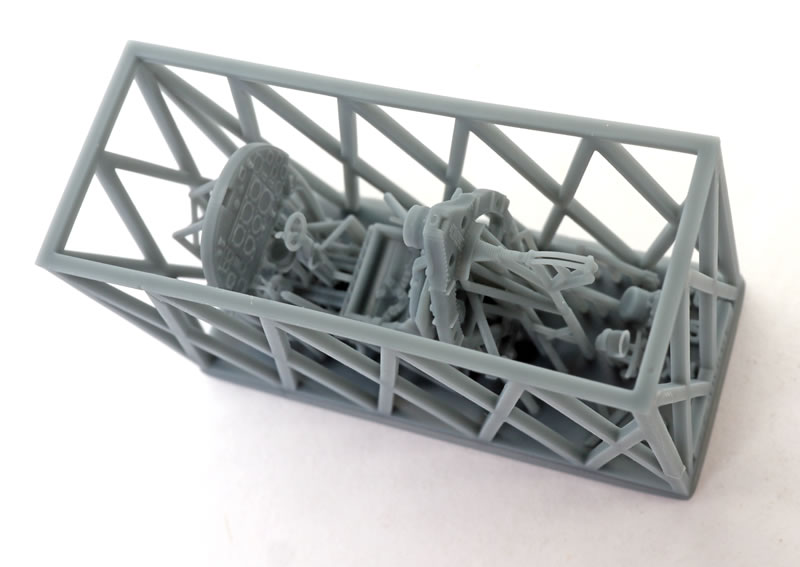
There are actually three complete 3d printed resin cockpits in the box. One of these is non-armoured with metal seat, the seciond is up-armoured wth metal seat and the third option is up-armoured with the later plastic seat.
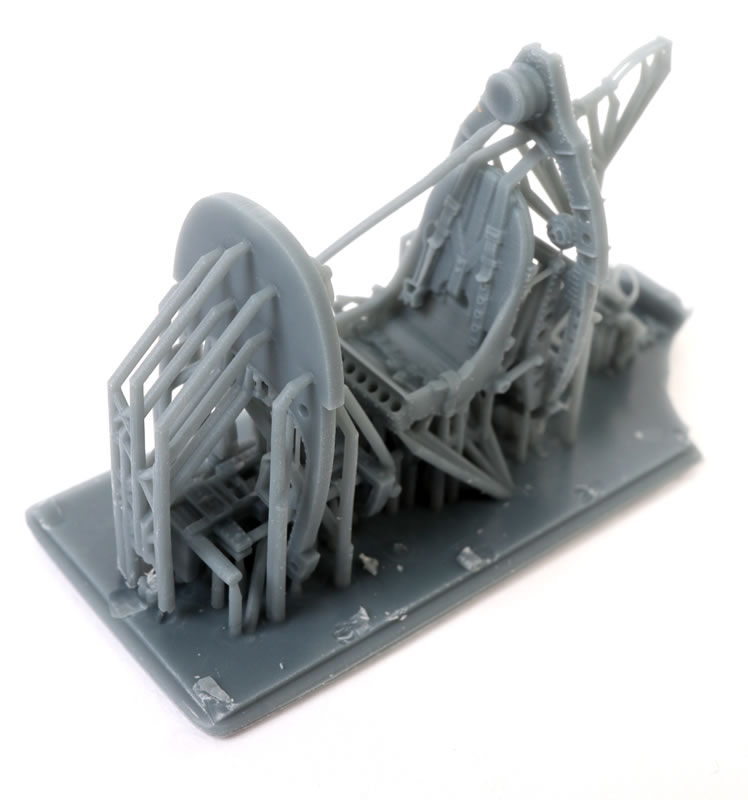
All of these are works of art - just gorgeous. Take care when removing the main cockpit components from their printing attachment points though.
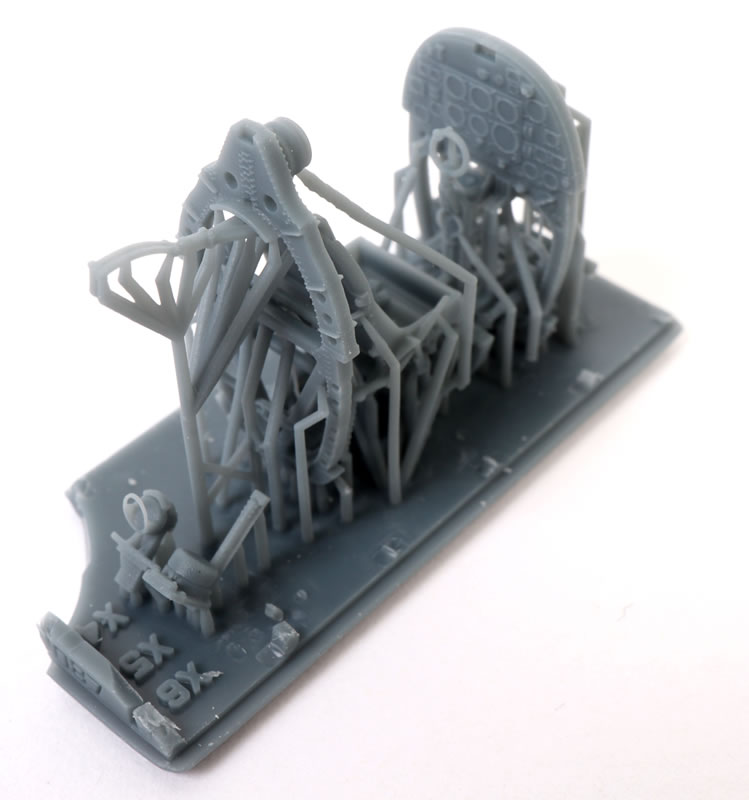
Two sets of seamless main wheels are next on the 3d printed list. These feature lovely detail on the hubs, subtle bulgings and flattening and raised lettering on the sidewalls.
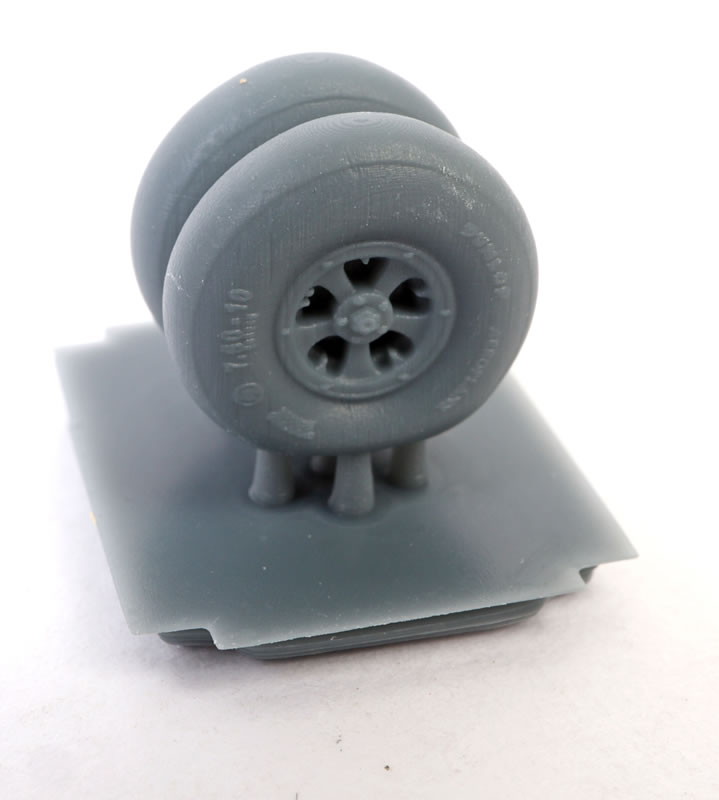
Two sets of two styles of 3d printed exhausts are hollowed out on the ends of the ejectors.
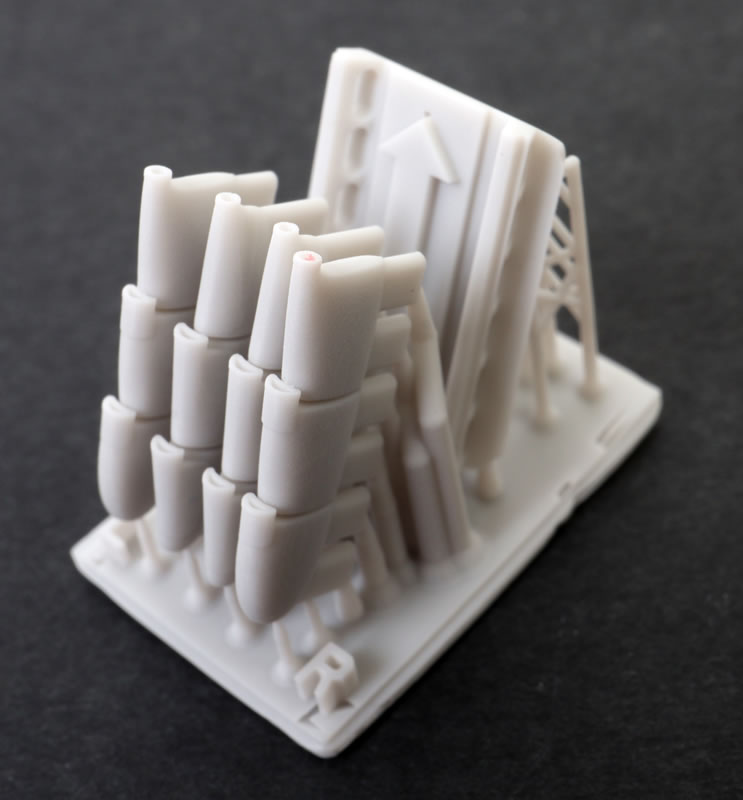
Seamless intakes and mirrors round out the 3d printed party.
Airframe Plastic Parts
The fuselage halves and the two sets of wings are identical, so you may depict one Mk.I and one Mk.II or two Mark Is or two Mk.IIs.
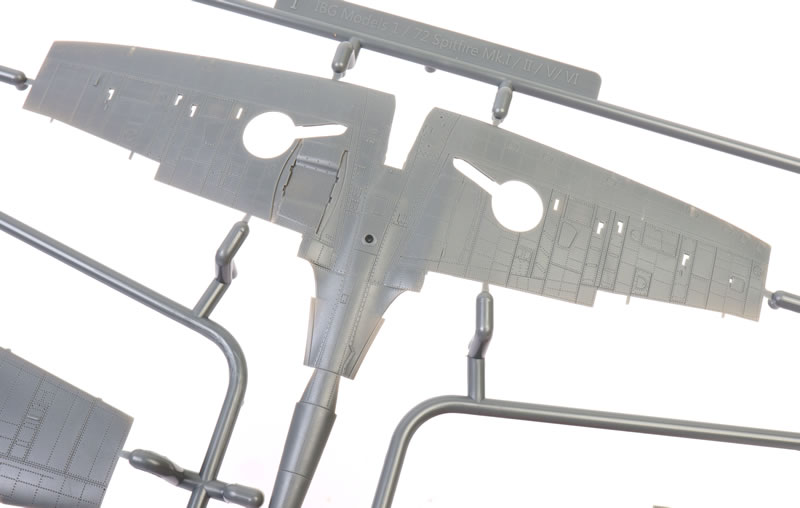
The late version of the Spitfire I and the Spitfire Mk.II feature a tiny scoop on both sides of the fuselage immediately under the windscreen, a very slightly raised saddle panel representing the later 3mm armour protection for the fuel tank just in front of the windscreen, and some raised sections to accommodate the external armoured glass of the later windscreen.
The early version fuselage lacks these features.
Either version may be built straight from the box.
The wings are moulded as one full-span lower section and separate port and starboard upper halves.
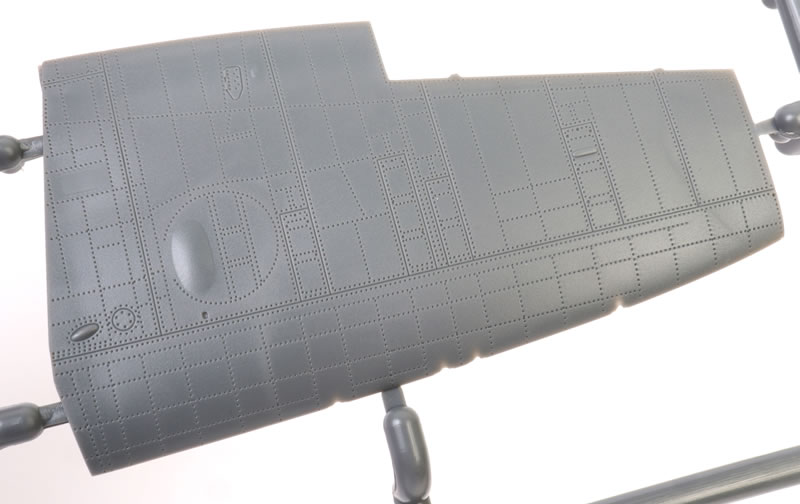
The upper wings feature the kidney shaped bulges to accomodate the main wheels. Machine gun access panels are moulded shut.
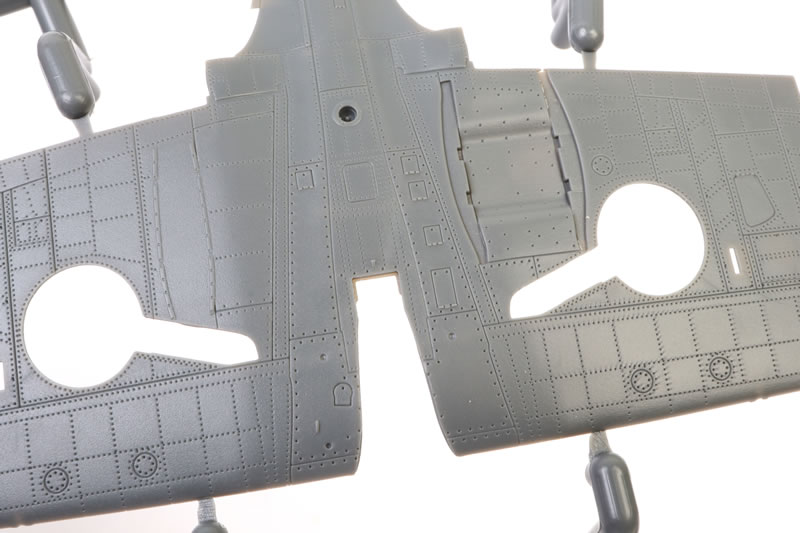
These bulges are correct on production machines up to the Spitfire Mk.Vc
Detail
IBG combines plastic, 3d printed resin and brass photo-etched parts in this special Black Box edition, delivering a very high level of detail straight from the box. The 3d printed cockpit is particularly impressive.
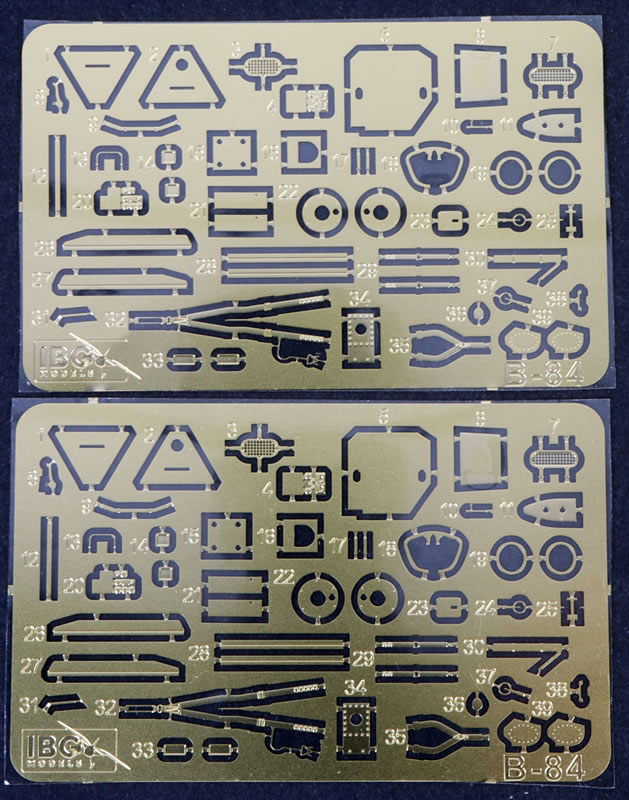
Two varieties of plastic instrument panels are offered.The plastic panels feature raised bezels and a decal instrument dial layover is also included in Mk.I Early, Mk.I Mid and Mk.I Late configurations.
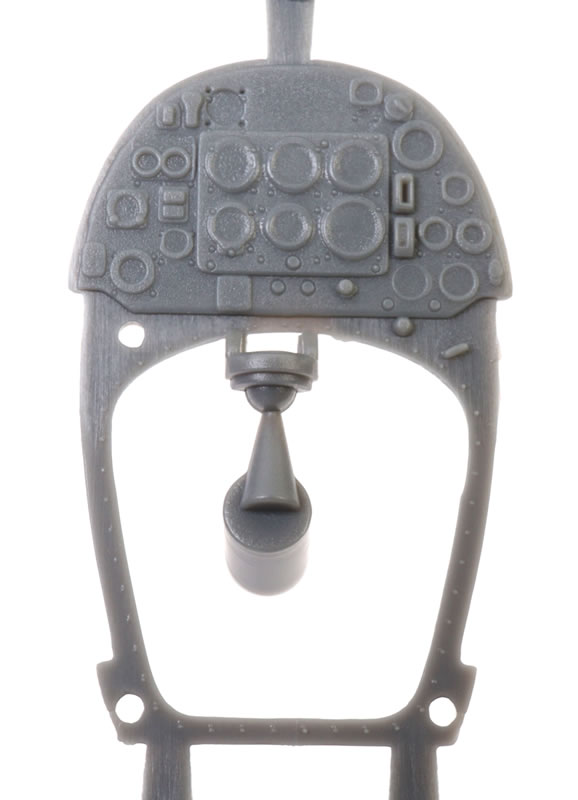
The rear bulkhead may be built with or without the pilot's head armour.
Early manual undercarriage hand pump and later hydraulic controls in the cockpit are included. Some sources state that the manual system was fitted to the entire Spitfire Mk.I series, while others suggest that it was replaced on the production line after about 600 aircraft were built.
The wheel wells and undercarriage parts are really well detailed.
Engineering and Options
The kit is broken down conventionally. The fuselage is full-length with the upper and lower cowling parts, radio access hatch and rear upper cowling being inserts to the main fuselage halves.
The lower cowl is separate too.
The wings are also moulded without inserts.
Ailerons, elevators, rudder and flaps are all separate.
The elevators are moulded as separate parts.
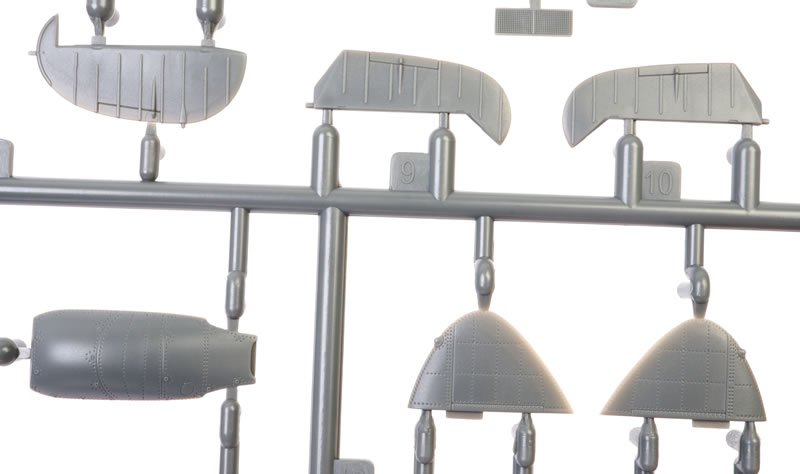
Other options include a choice of three styles of propeller - two-bladed Watts with optional spinner caps, deHavilland or two-speed metal Rotol (although don't confuse these with the later wide wooden Rotol blades fitted to the Spitfire Mk.II and Mk.V. I understand that these are metal Rotol blades only fitted to a limited number of Mk.I Spitfires), smooth or radial tread tyres, two styles of canopy, alternative antenna masts and fuselage tank sealing strips.
The canopy side door is a separate part too, with the option of posing the door open or closed.
The clear parts are free from distortion and quite thin.
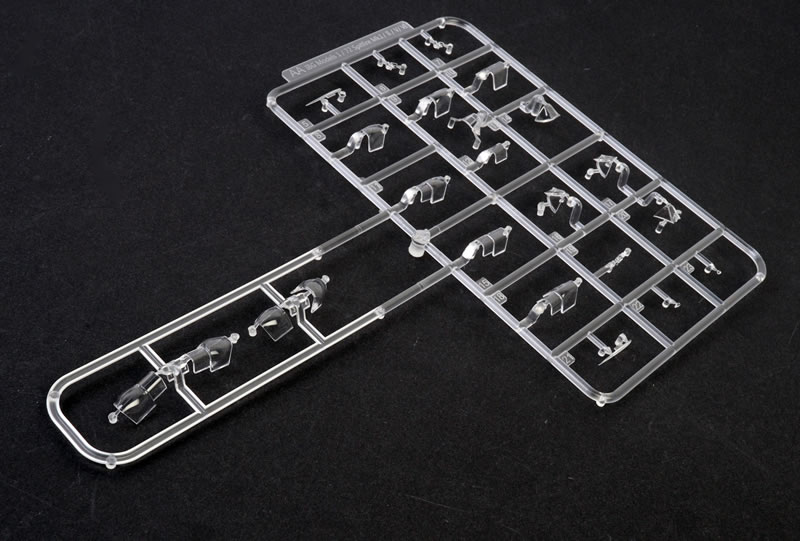
The closed canopy options comprises a combined sliding section and rear section, while the open canopy supplies a separate sliding section to sit over the rear clear part.
Surface Detail
If you have have admired the surface detail on any of IBG's recent releases, you won't be disappointed with this one.
Panel lines are crisp, fine and even. Lines of rivets are also present.
The rivet lines seem to follow the pattern applied to the full-sized aircraft.
My big studio lights and close-up images make some of the recessed rivets look heavy, but they really are impressive at normal viewing distances. Paint will make a difference too.
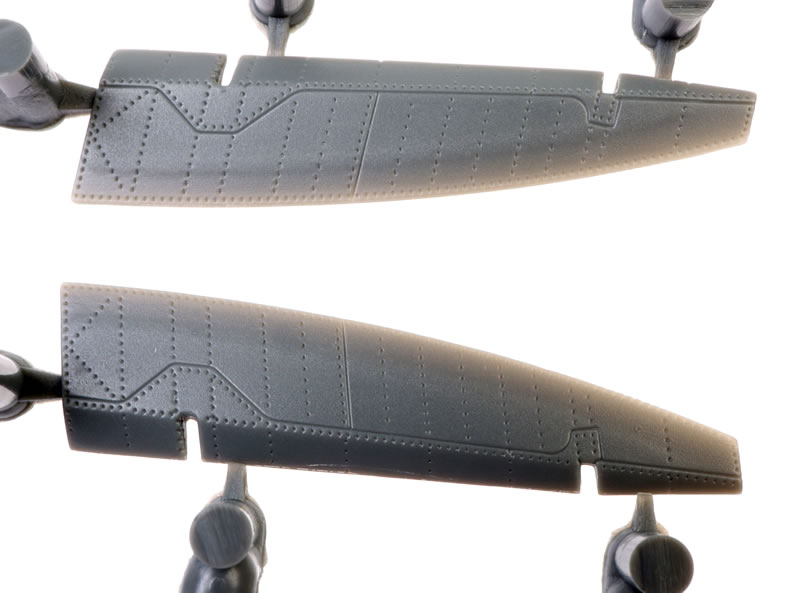
The rivets are visible on the real aircraft too, but the degree of prominence will depend on a number of factors - the gloss level of the paint, lighting, weathering, the angle and distance of the observer and more.
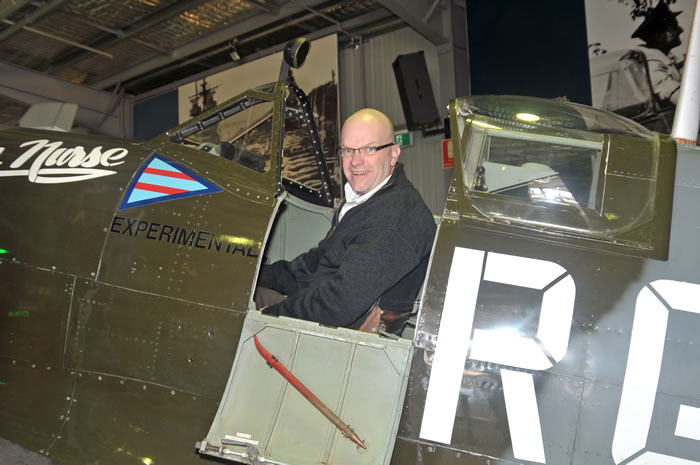
These photos show the airworthy Spitfire Mk.VIII at the Temora Aviation Museum taken during a visit in 2009. Granted, this example is glossy and restored but the rivet patterns are very obvious when viewed close-up.
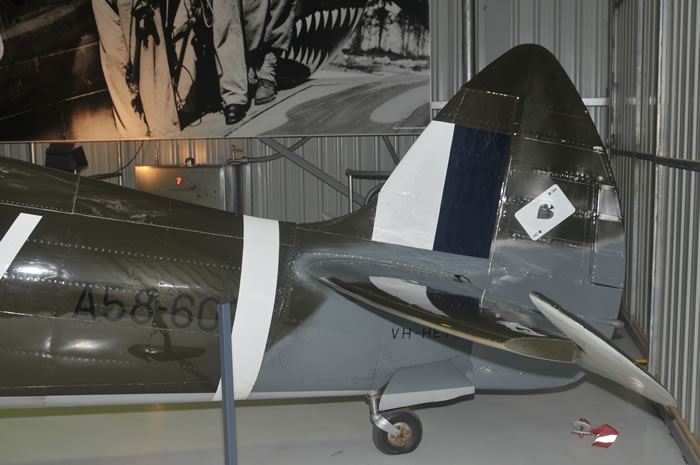
Just like on the real aircraft, after a coat of matt paint and putting a little distance between the observer and the model, the rivet detail will be much subtler unless you decide to emphasise it with washes and other weathering techniques, but that is entirely your prerogative!
In my opinion, these are nicely restrained and I will definitely leave them all in place.
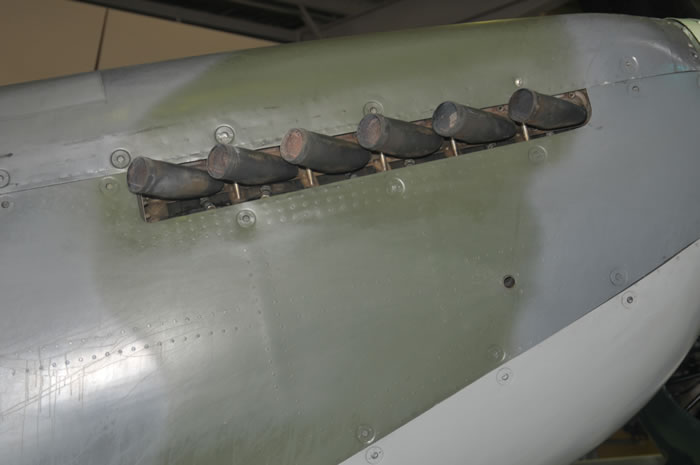
The fasteners are visible on the real aircraft (this time Temora's Mk.XVI, which features flatter paintwork) but if the kit representation is not to your taste it will be a simple matter to sand them down.
Fabric detail is equally impressive, with strip and stitching texture beautifully presented on the control surfaces.
Markings and Instructions
Decals are supplied for ten aircraft plus three bonus markings.
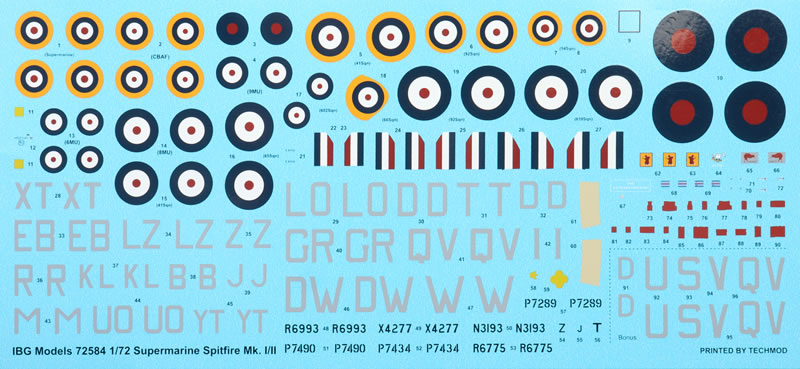
All are finished in RAF Dark Earth and Dark Green upper surfaces with lower surfaces in a range of Sky, White, Black and Silver.
-
Spitfire Mk.I, No. 41 Sqn. P9428 / EBoR Robin (S/Ldr. 'Robin' Hood)
June 1940 Dunkirk Evacuation - Hornchurch
-
Spitfire Mk.I, No. 54 Sqn. P9390 / KLoB Kiwi II (F/Lt. Alan Christopher Deere)
July 1940 - Hornchurch / Rochford
-
Spitfire Mk.I, No. 602 Sqn. L1002 / LOoD Ogu-Pogu (F/Lt. John Dunlop Urie)
January 1940 - Drem Montrose
-
Spitfire Mk.I, No. 603 Sqn. X4277 / XToM (P/O Richard Hillary)
September 1940 - Hornchurch
-
Spitfire Mk.I, No. 610 Sqn. R6993 / DWoW (S/Ldr. John Ellis)
August 1940 - Biggin Hills
-
Spitfire Mk.I, No. 65 Sqn. R6775 / YToJ East India Fund Flight (F/O Jeffrey Quill)
August 1940 - Manston Rochford
-
Spitfire Mk.I, No. 92 Sqn. N3193 / GRoT (F/O Stanford Tuck)
May 1940 Winston Churchill's Flight to Paris - Paris FR
-
Spitfire Mk.II, No. 19 Sqn. P7434 / QVoI (Sgt. Bernard James Jennings)
October 1940 - Fowlmere
-
Spitfire Mk.II, No. 266 Sqn. P7289 / UOoD Ogu-Pogu (P/O Dennis Armitage)
October 1940 - Wittering
-
Spitfire Mk.II, No. 66 Sqn. P7490 / LZoZ (S/Ldr. Athol Stanhope Forbes)
1940 - Biggin Hill
plus three bonus sets of markings
Decals are printed perfectly by Techmod
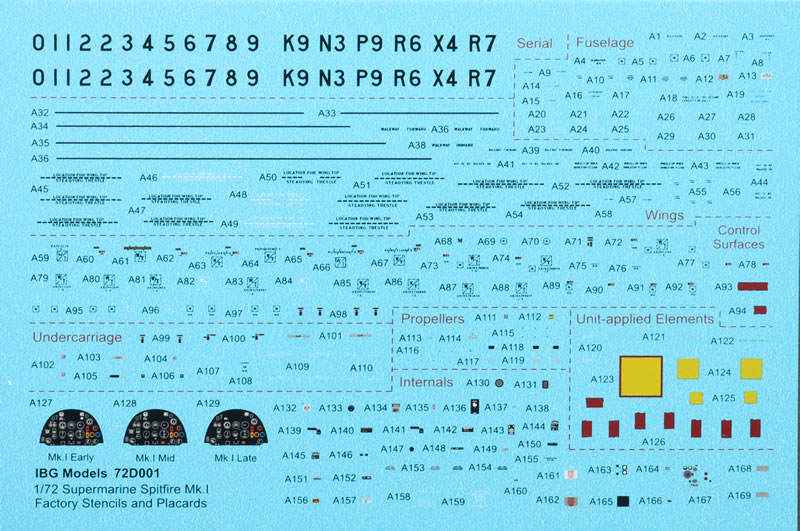
Two full sets of stencil markings are included too - one sheet for the Mk.I and one for the Mk.II.
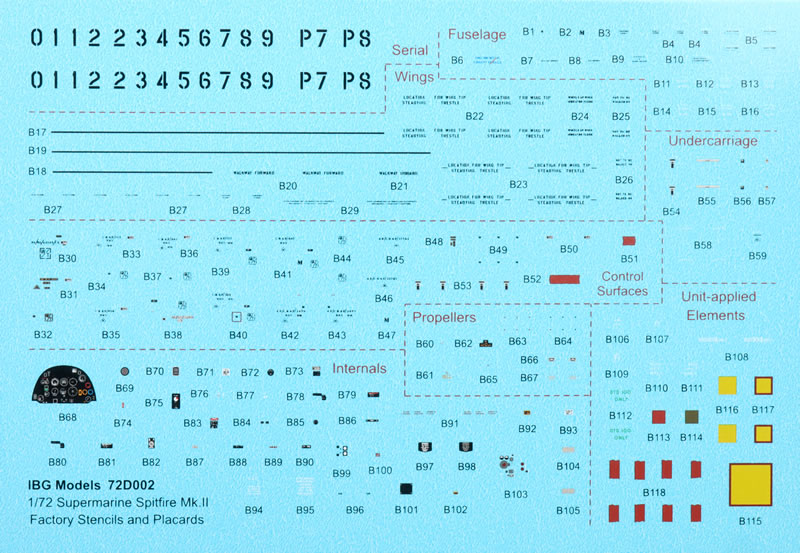
The 28 page instruction booklet is bursting with details for assembly, options, stencil and marking guides and much more.
The exhaustive marking guide delivers four-view full colour illustrations plus historical coverage for all ten options.
The three bonus markings is a nice touch too.
Two sets of self-adhesive die-cut masks round out the package.
IBG has delivered a big response worthy of this most iconic symbol of the Battle of Britain.
It is great to see IBG's high level of detail and surface texture treatment on their all-new Spitfire Mk.I / II.
The inclusion of options that allow different versions of the Spitfire Mk.I and II is very welcome too.
Highly Recommended.
Thanks to IBG for the sample
Review Text Copyright © 2013 by
Brett Green
Page Created 3 October, 2025
Last updated
10 October, 2025
Back to HyperScale Main Page
Back to Reviews Page |
